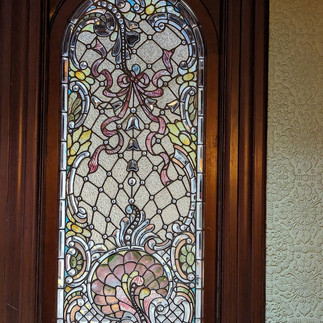It's A Mystery
- Marsha

- Apr 25, 2024
- 2 min read
It's unfortunate that tragedy is so often the catalyst for the remarkable.
The Winchester Mystery house is indeed remarkable. What began as a two story, eight room farmhouse, originally known to Sarah Winchester as Llanada Villa, grew into the 160 room tourist attraction it is today out Sarah's heartbreaking past.
I believe most people know at least some of the tale, and while it does deserve repeating, I wouldn't be able to do it justice in this brief post.
The house is truly unique. Sarah's overwhelming need for constant construction inspired some interesting features such as:
The stairs that go nowhere.

Multiple doors that open up to nothing but empty space (watch your step, these are not on the first floor).

And winding, low riser stairs to help manage her arthritis.

Looking out the windows offers a unique view of gabled rooftops of varying height and form squished together to provide the roofing of the ode to penance.

The 1906 earthquake destroyed parts of the structure, which Sarah chose not to repair, but the rest of the mansion is stunning. Detail work can be seen everywhere, no surface was overlooked. The stained glass window featured below is the most expensive window in the house costing $1,500 at the time of purchase in the early 1900s.
The spiderweb window design can be seen throughout the house. We opted to take both the standard tour as well as the paranormal one, thus allowing us to visit most of the rooms. My favorite tidbit learned on our paranormal tour is that uranium glass was used in the stained glass on some of the doors.
For those who don't know, uranium glass appears to be clear but glows green when exposed to a black light.
It was an amazing visit. We learned so much about the house and the woman behind it.
Our other stop for the day was the Rosicrucian Egyptian Museum.

You have to love an entrance where you see this upon entering.

This is a wonderful stop for anyone who appreciates Egyptian history. With its multiple displays and outdoor walking area, we really enjoyed ourselves.
While many of the pieces were donated, and indeed are historical, there are a number of replicas purchased in the 1930s from the British Museum, because, well, the British Museum is a hoarder of all things belonging to other countries.
I bet they made a tidy profit from selling replicas of the pieces in their collections to museums not fortunate enough to be them.
























Comments